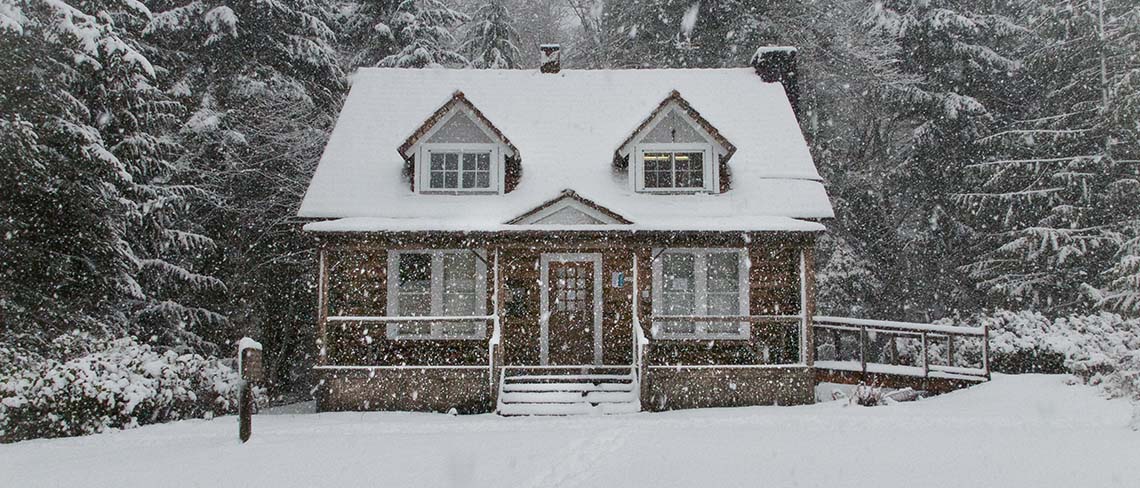
As the cold weather really sets in, Contura shares expert tips on readying your home for winter.
The end of daylight saving, this year on Sunday 27th October, is a sure-fire signal of the looming winter, bringing darker nights colder temperatures and harsher weather conditions.
In order to protect your home (and yourself!) from the effects of wind, rain, sleet, snow and icy conditions, it’s important to carry out winter-proofing checks well in advance. Some household repairs or updates will mean calling in the professionals, however there are several smaller jobs that shouldn’t prove too difficult.
Here, Phil Wood, UK country manager at Contura, Europe’s leading manufacturer of wood burning stoves, gives his tips to ensure your house is prepared for the cold weather.
“It’s always better to be safe than sorry when it comes to weather-proofing your home,” says Phil. “There’s nothing worse than having to deal with a leaking window, burst pipe, malfunctioning boiler, or broken stove in the middle of winter. We naturally spend more time indoors during cold, wet weather and our homes need to be well-equipped to see the winter through in comfort.
“As such, we have prepared a winter-proofing guide for homeowners to help prevent any unfortunate mishaps.”
Read on for Phil’s guide to preparing your home for winter.
1. Windows and doors
One of the quickest ways a home loses heat is through draughty windows and doors. Check windows and doors to ensure they close properly and assess if the weather strips or sealant needs repairing or replacing. All good DIY stores have sealant solution, which can be inserted directly into the area, or you can buy weather-proof adhesive strips. Both techniques will help to prevent heat escaping and stop draughts.
2. Keep heat in
It sounds simple, but it’s far better for your wallet and for the planet to wrap up warmly, rather than cranking up the central heating at the first sign of a cold snap. Ensure curtains are drawn, keep doors closed and block draughts with excluders or rolled up blankets as this will help keep the heat in. Get the blankets, fleeces, slippers and hot water bottles out, and swap your summer duvet for a heavier tog, remembering that your bedroom should be slightly cooler than the rest of the house for optimum sleep.
3. Efficient heating
Using central heating can quickly rack up your energy bills if used throughout the entire home for long periods. A wood burning stove installed in the main living space is an efficient heat source without the need to heat rooms that are not being used. Consider investing in a wood burner to insert into an existing fireplace (open fires lose 80% of the heat up the chimney), or as a standalone feature in a more modern home.
4. Weather proof the roof
Inspect the roof for any loose, missing or damaged tiles. Repairs and maintenance should always be done by a professional roofer. Ask them to look at areas around the chimney and air vents to repair accordingly. This can be a costly job, but in order to prevent leaks and cold getting in, it is necessary to do.
5. Clean the gutters
Not the most glamorous task, but clogged gutters impede the draining of rain water and melting snow, which could result in household leaks. Avoid blockages by clearing debris such as leaves, sticks and mud from all gutters. Make sure the end section of the guttering (where rainwater drains from) is positioned away from your house by a few feet to ensure water runs away from the property.
6. Ventilation
It may sound counter-intuitive, but homes need constant ventilation and air flow to prevent moisture build up, which can cause damp. Open windows daily as this will ensure old, stale air is mixed with fresh air – fresh air heats up far quicker and retains heat better.
Similarly, cooking, showering and drying laundry indoors creates humidity and this excess moisture increases the likelihood of mould build-up and condensation. This is bad news for allergy sufferers and makes us more susceptible to airborne winter illnesses such as coughs, colds and flu. Throughout winter keep your home well ventilated and ensure good air circulation daily.
7. Professional stove clean
If you have a fireplace or stove, get the chimney and flue professionally swept at least once a year. This will remove any debris, tar or soot build up for a more efficient burn. It’s also a good time to check for any cracks or breaks inside the stove, which should be repaired. Ensure you have a good supply of firewood and only use dried natural logs. Avoid burning treated (polished, oiled) or wet wood, as this creates more carbon dioxide and an inefficient burn – it can also damage your wood burner.
For more information on Contura, please visit http://www.contura.eu
-Ends-
For further press information, please contact:
Elsa Findlay | Jo Kendall | Julie Aguilera
Rooster PR
T: +44 (0)20 3440 8930
E: [email protected]
About Contura:
Contura is Europe’s leading manufacturer of wood burning stoves, offering an extensive range of classic and contemporary wood burners; from traditional insert stoves suitable for existing fireplaces, to freestanding statement models made with innovative materials such as soapstone.
Starting at £1,295, Contura stoves are premium yet affordable. Award winning, timeless Swedish design means the products complement or enhance any style of home, whilst also offering outstanding performance, maximum efficiency, practicality and ease of use.
Designed and assembled at the factory located in Markaryd, Sweden, and manufactured to the highest standards, all Contura stoves are eco-design friendly, energy efficient, offering powerful convection, superior combustion technology and clean burning systems. Currently, 95% of Contura stoves are DEFRA Clean Air Act exempt and thus approved for use in Smoke Control Areas.
Contura stoves can be purchased through a network of 165 independent retailers nationwide.
Contura is part of the NIBE group, a Swedish manufacturing company producing world class solutions in sustainable energy across Europe, North America, Asia and Australia.
Contura is a founding member of the Stove Industry Alliance (SIA) in the UK.
For more information please visit www.contura.eu






